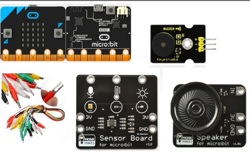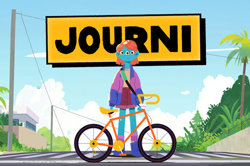User stories and design criteria: Fair use of the school basketball court
These teacher slides can be used to introduce and develop understandings about user stories and how to use design criteria to generate ideas to meet a users needs and goals. In this set of slides we use the example of a school context that is about the fair use of basketball courts at playtime.
Additional details
| Year band(s) | 5-6 |
|---|---|
| Content type | Lesson ideas |
| Format | Downloadable resources |
| Core and overarching concepts | Design thinking, Impact and interactions, Specification (decomposing problems) |
| Australian Curriculum Digital Technologies code(s) |
AC9TDI6P01
Define problems with given or co developed design criteria and by creating user stories |
| Keywords | design, user stories, design criteria, local context |
| Integrated, cross-curriculum, special needs | HPE, Design and Technologies |
| Organisation | Education Services Australia |
| Copyright | Creative Commons Attribution 4.0, unless otherwise indicated |
Related resources
-

Classroom ideas: Micro:bit Environmental Measurement (visual and general-purpose programming) (Years 5-8)
Investigating environmental data with Micro:bits: This tutorial shows the coding needed for digital solutions of some environmental issues that can be created using pseudocode and visual programming.
-

Classroom ideas F-10: Aboriginal and Torres Strait Islander connections to Digital Technologies
This resource provides examples of ways Aboriginal and Torres Strait Islander Histories and Cultures can be integrated into Digital Technologies. Examples include 'classification and sorting data' and 'designing solutions'.
-

DIY micro:bit metal detector (Years 5-6)
This activity shows one way to incorporate Digital Technologies into a goldfields unit in an authentic way using a micro:bit.
-

Visual programming with Scratch (Years 3-6)
This resource comprises a collection of sample activities that incorporate visual programming (Scratch) into teaching and learning programs.
-

Classroom ideas: Micro:bit Environmental Measurement (visual programming) (Years 5-6)
This tutorial shows the coding needed for digital solutions of some environmental issues that can be created using pseudocode and visual programming.
-

Classroom ideas: Choose your own adventure (Years 3-6)
In Digital Technologies, students from Year 3 onwards should be planning and implementing projects that include branching (decision-making). Creating a ‘choose your own adventure’ story is an excellent way for students to design and implement a project that makes use of branching.
-

Developing user stories
These teacher slides can be used to introduce and develop understandings about user stories and how to write a user story based on a users needs and goals. In this set of slides we use several examples to illustrate the format of a user story.
-

Journi online road safety education program
Journi is a free online road safety education program, developed in collaboration with experts in road safety and education to help keep kids safe. Journi is comprised of 4 flexible online modules and a suite of offline educator resources including lesson plans and student activities that align to Version 9 of the Australian Curriculum.
